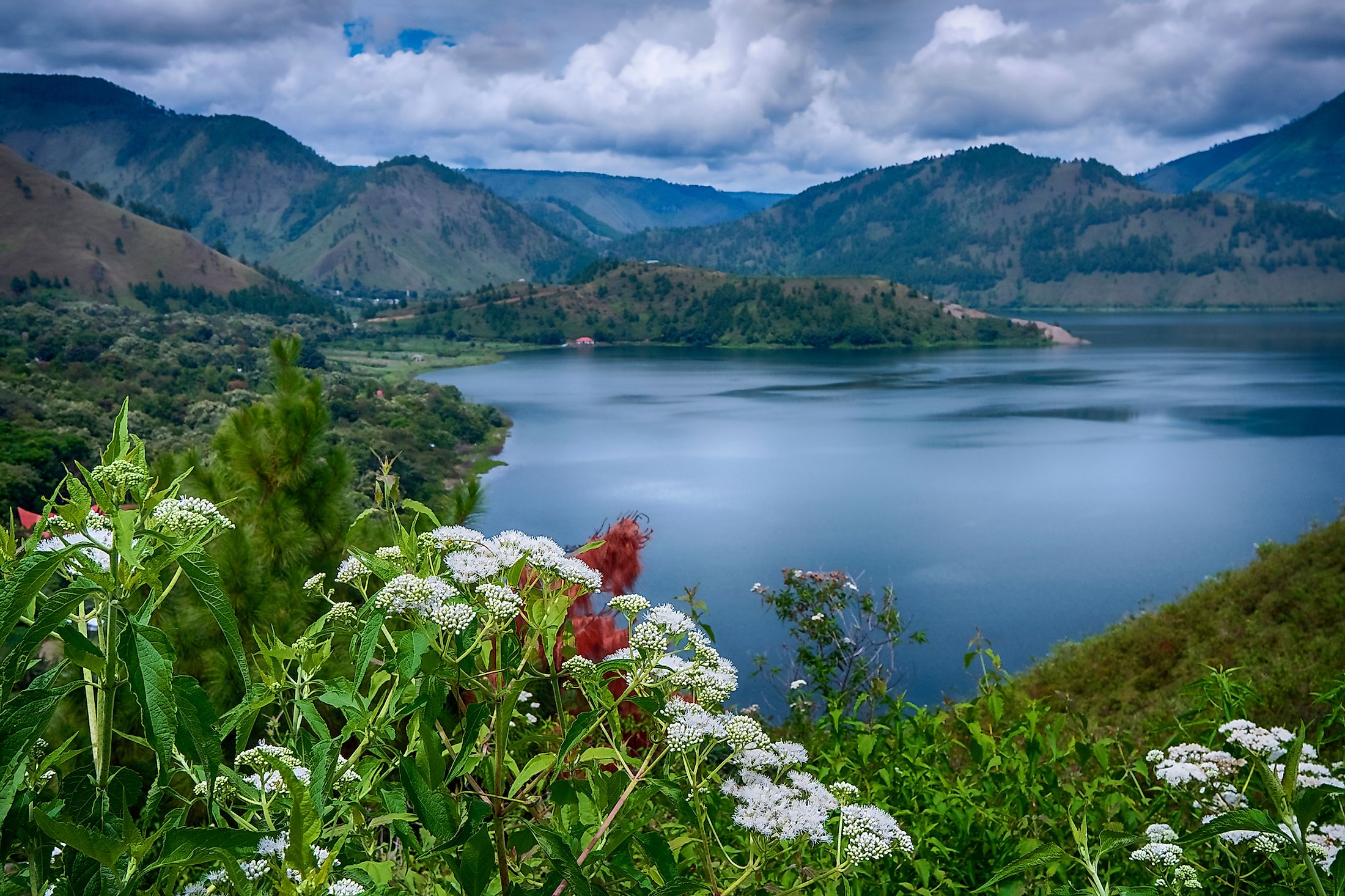
Lake Toba
Also referred to as Danau Toba, Lake Toba is a huge natural lake that is situated in the heart of the northern portion of the Sumatra Island in the North Sumatra Province of Indonesia, in the caldera of a supervolcano. Covering an area of 1,130 sq. km, Lake Toba is considered the world’s largest tectonic and volcanic lake as well as the largest lake in Indonesia. The Lake Toba caldera has recently been designated as one of the UNESCO Global Geoparks.
Geography
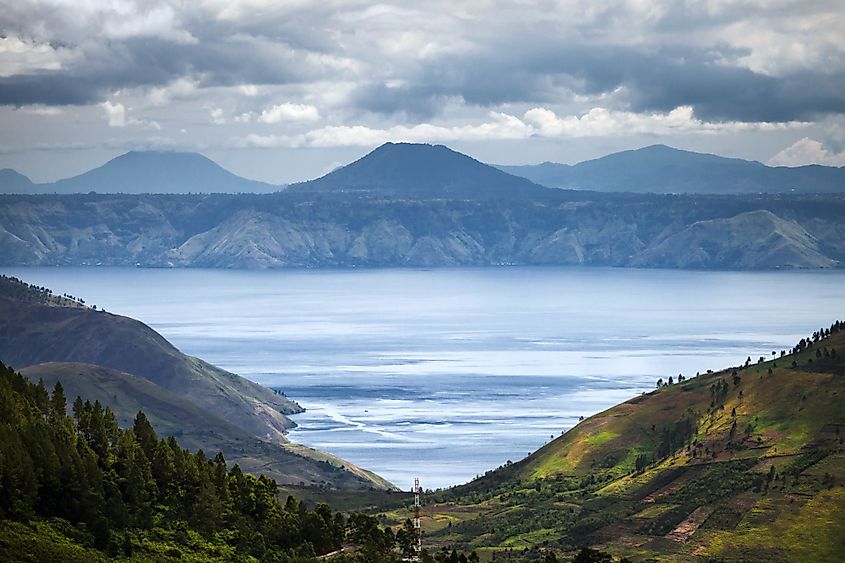
Located in the Barisan Mountains close to the Great Sumatran fault, Lake Toba has a length of 100km and a maximum width of 30km. The lake is situated at an elevation of 905m and reaches a maximum depth of 505m. Lake Toba is particularly unusual as the central part of the lake is occupied by the large Samosir Island. The waters of Lake Toba overflows into the Asahan River that finally empties into the Strait of Malacca.
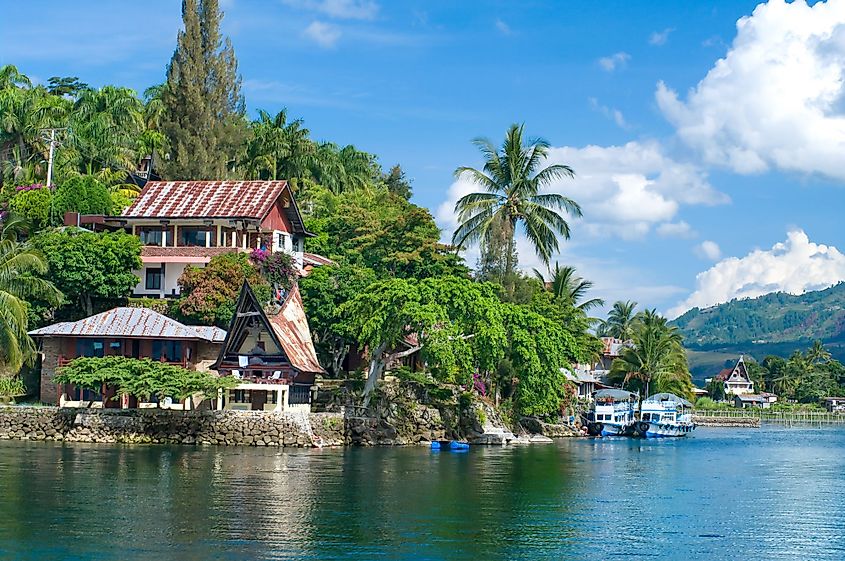
Geological studies have revealed that the crater which Lake Toba presently occupies was formed due to a massive super-volcanic eruption about 69,000 to 77,000 years ago. Modern techniques have estimated the time to be about 74,000 years ago. This super-volcanic eruption represented a climate-changing event and was the largest-known explosive eruption that the earth had experienced in the past 25 million years. The collapse that occurred after the eruption resulted in the formation of the huge caldera that Lake Toba presently occupies. A resurgent dome led to the formation of an island at the heart of the lake.
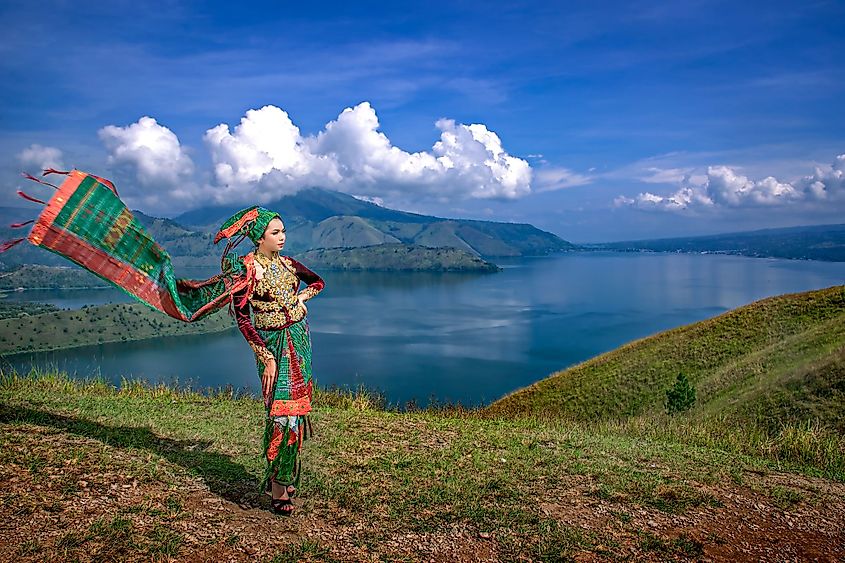
The caldera that Lake Toba occupies is composed of four volcanic craters overlapping each other. Four stratovolcanoes, three craters, and four cones are also visible in the lake. It is believed that among these cones, the Tandukbenua cone that is located on the northwestern edge of the caldera is the youngest, while the Pusubukit volcano, located on the southern edge of the caldera is solfatarically active. The indigenous Batak people reside in traditional Batak houses along the shores of Lake Toba.
As per estimates, this massive super-volcanic eruption led to the loss of thousands of human lives and property damage and had deposited an ash layer of up to 15cm thick over entire South Asia. Researchers believe that a volcanic winter was formed after the eruption, where the world temperature dropped by 3° to 5°C in the lower altitudes and by 15°C in the higher altitudes. Various studies have also revealed that traces of ash from this massive eruption was also found from Lake Malawi in East Africa.
Ecology
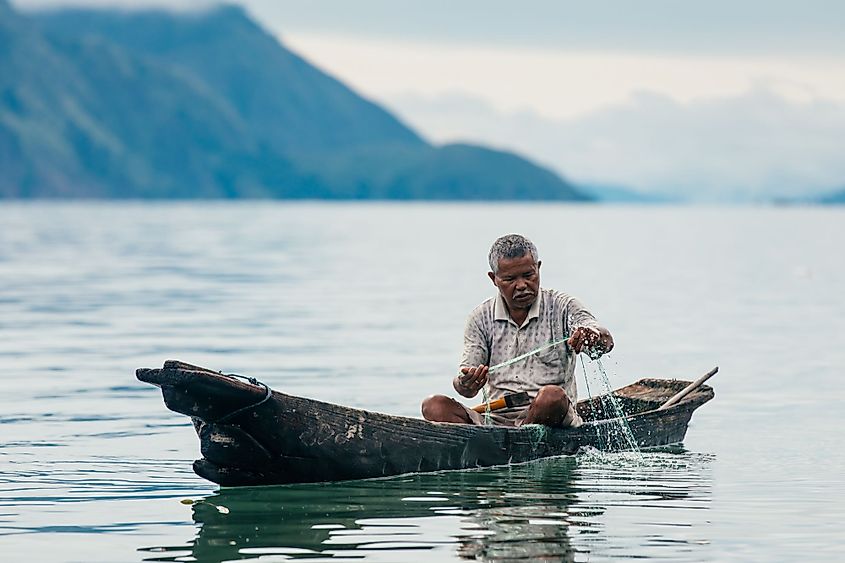
Lake Toba consists of several types of phytoplankton and three different types of macrophytes (emerged, floating, and submerged). The areas around the lake are dominated by rainforests. The lake also consists of numerous zooplankton and benthic animals. Since the lake is considered to be oligotrophic, the indigenous fish fauna that is found in the lake is also very scarce. Some of the fish species that are found in the lake include Batak fish, white spot, dwarf snakehead, striped snakehead, catfish, silver barb, pearl danio, common barb, etc. Fishes like Nile tilapia, Mozambique tilapia, climbing perch, grass carp, common carp, giant gourami, rainbow fish, etc have also been introduced in Lake Toba.











